When it’s about SEO, strategy sets the direction, but it’s precise, consistent execution of that potential into performance. That’s where the Web Producer plays a pivotal role.
Web Producers go far beyond pressing “publish”. They are the operational backbone of every successful seo launch process. From metadata to internal linking, page speed to mobile responsiveness, they ensure that every piece of content is not only beautifully presented but fully optimized for search engines and user experience.
Table of Contents:
By bridging the gap between strategy, design, development and SEO, Web Producers ensure content doesn’t just go live; it goes live ready to rank, perform and deliver measurable value.
In a digital landscape where visibility is earned, not guaranteed, Web Producer gives your content the best possible start fully optimized, trackable and ready to compete in the search results. In this article we will cover how a Web Producer approaches every SEO-driven content rollout.
Operationalizing Keyword Strategy Across Every Touchpoint
A strong SEO strategy starts with the right keywords, but it’s the Web Producer who brings that strategy into a fully optimized page. Here’s how they play a key role in the SEO launch process and strategy into performance:
Headlines and Headers
Keywords are thoughtfully placed in page titles (H1), subheadings (H2/H3), and section headers to signal relevance to both users and search engines.
No keyword stuffing, just smart, intentional usage that enhances clarity and hierarchy.
Meta Titles and Descriptions
The Web Producer crafts meta data to ensure it’s not only keyword-rich but compelling enough to earn a click from search results. They balance SEO needs with human appeal, often optimizing length, clarity, and impact.
Image Optimization
Keywords are included in image alt text where relevant, helping improve accessibility and giving Google more context on what the page is about. It’s a subtle but powerful enhancement, especially for long-tail SEO.
Structural Consistency
From heading hierarchy (H1 > H2 > H3) to content formatting, the Web Producer ensures each piece follows SEO best practices so that it’s not just written well it’s structured to rank.
Technical Hygiene Checks that Protect Performance
While content creators and marketers shape what the audience sees, Web Producers focus on what the audience experiences. Before any content goes live, they run crucial technical checks that directly impact SEO, user trust, and on-site engagement. Here’s what they check and fix:
Mobile Responsiveness
Web Producer tests every layout and module across devices and browsers to make sure it’s mobile-friendly and touch-optimized. This is critical, especially when most of the social traffic arrives via mobile.
Broken Links and 404 Errors
Clicking a link that leads to a “Page Not Found” or “404 Error” is frustrating and makes \your site look unprofessional. That’s why Web Producers check all links like buttons, menus, and external sites before anything goes live. They make sure everything leads to the right place, so visitors don’t get lost or annoyed.
Canonical Tags
Duplicate or similar content can dilute SEO value and confuse search engines. Web Producers apply canonical tags to point Google to the preferred version, safeguarding SEO rankings and content clarity.
Building Intelligent Internal Link Pathways
Content works best when it’s part of a system. Web Producers ensure every new piece of content becomes part of a strategic, well-organized internal linking system that strengthens SEO and user experience.
Identify high-value internal linking opportunities
Web Producers don’t just add links without strategic value. They look for meaningful connections between related content. For example, a blog on “email marketing tips” might link to your “email automation tools” page. These connections help users and boost their SEO.
Improve Engagement with Contextual Linking
Links are placed where they naturally fit within the content, not just stuffed in. This improves readability, increases engagement and keeps visitors exploring your site longer.
Update older posts to connect them to the new content
Web Producers go back to previous articles or pages and insert links to your new content. This not only drives traffic to fresh content but also signals to search engines that your website is active and well maintained.
Implement Structured Internal Linking to Support Site Architecture:
Internal linking isn’t random; it follows a plan. Web Producers ensure your site’s structure stays logical and easy to navigate, whether you have 20 pages or 2,000 pages. This also helps search engines crawl your site more efficiently.

Optimizing Every Launch for Visibility
For Web Producers, hitting “publish” isn’t the finish line; it’s the starting point of the performance. A successful content launch means making sure your content is seen, tracked, and performing as expected.
Submit your page to Google for faster visibility
Once a page goes live, Web Producers manually tell Google about it through the Search Console. This speeds up how quickly it appears in search results, so your audience can find it faster.
Set up event tracking and conversion goals in GA4
They configure Google Analytics 4 (GA4) to capture meaningful user behavior like clicks on a CTA, time spent on the page, or form submissions. This ensures you’re not just monitoring traffic but also understanding how that traffic engages and converts.

Create feedback loops that drive better content
After launching, they gather early data and share it with content creators and marketers. Are people bouncing too fast? Are CTAs being clicked? These insights help the team fine-tuned future content. If users are exiting too early or missing key actions, the team can adjust quickly and apply those learnings to future content. It’s not about launching, it’s about continuously improving based on real user behavior.
Recommended Reading:
Coordinating Seamless Cross-Channel Launches
When content goes live, it’s not just about putting a page on your website. Web Producers make sure that content is part of a full campaign that reaches your audience everywhere they are email, social media, and more.
Set up social sharing metadata (Open Graph, Twitter Cards)
Ever notice how great links look when shared on social media with a proper image, title, and description? That doesn’t happen by accident. Web Producers add behind-the-scenes tags that control how your content appears on platforms like Facebook, LinkedIn, and Twitter.
Check that every asset is live and functioning across all channels
Before launch, they double-check everything from videos and images to buttons and links. Nothing’s worse than a broken link in an email blast. Web Producers prevent those embarrassing slip-ups.
Conclusion
Great SEO requires collaboration between content, design, development, and marketing. But a Web Producer is the one who brings it all together and makes sure nothing slips through the cracks.
Web Producers are not just project managers or content publishers; they are strategic executors who transform SEO vision into tangible performance.
They take your vision and turn it into something that performs live, linked, and ready to rank. Your strategy deserves flawless execution. In today’s digital ecosystem, where discoverability can make or break content ROI, Web Producers are the unsung heroes. They’re the ones behind the scenes engineering outcomes, not just overseeing tasks.
If you want content that performs not just getting published, involve Web Producer early, rely on their process, and trust in their ability to deliver search-ready results every single time. They’re not just managing content. They’re engineering performance.












 The Web Producer: Your Essential Partner for Digital and Social Media Success
The Web Producer: Your Essential Partner for Digital and Social Media Success  Best Web Producer for Marketing Support: Execute Your Strategies Right Away
Best Web Producer for Marketing Support: Execute Your Strategies Right Away  Web Producer for Marketing Support: Your Strategy, Our Execution
Web Producer for Marketing Support: Your Strategy, Our Execution 
